St Andrews Hole Names
Every hole at the Home of Golf's legendary Old Course has a name, often as historic as the course itself


The Old Course at St Andrews is one of the most storied of any, with iconic landmarks and legendary bunkers on its famously rolling fairways. Yet, the names given to each hole are almost as steeped in history as the world’s oldest course.
Some are merely one-word descriptions of the holes they represent, while others are named after giants of the game who left their indelible imprint on the course. Some are named after old traditions or landmarks that no longer exist, while for a few, time has rendered their meanings open to conjecture.
Hole 1 – Burn
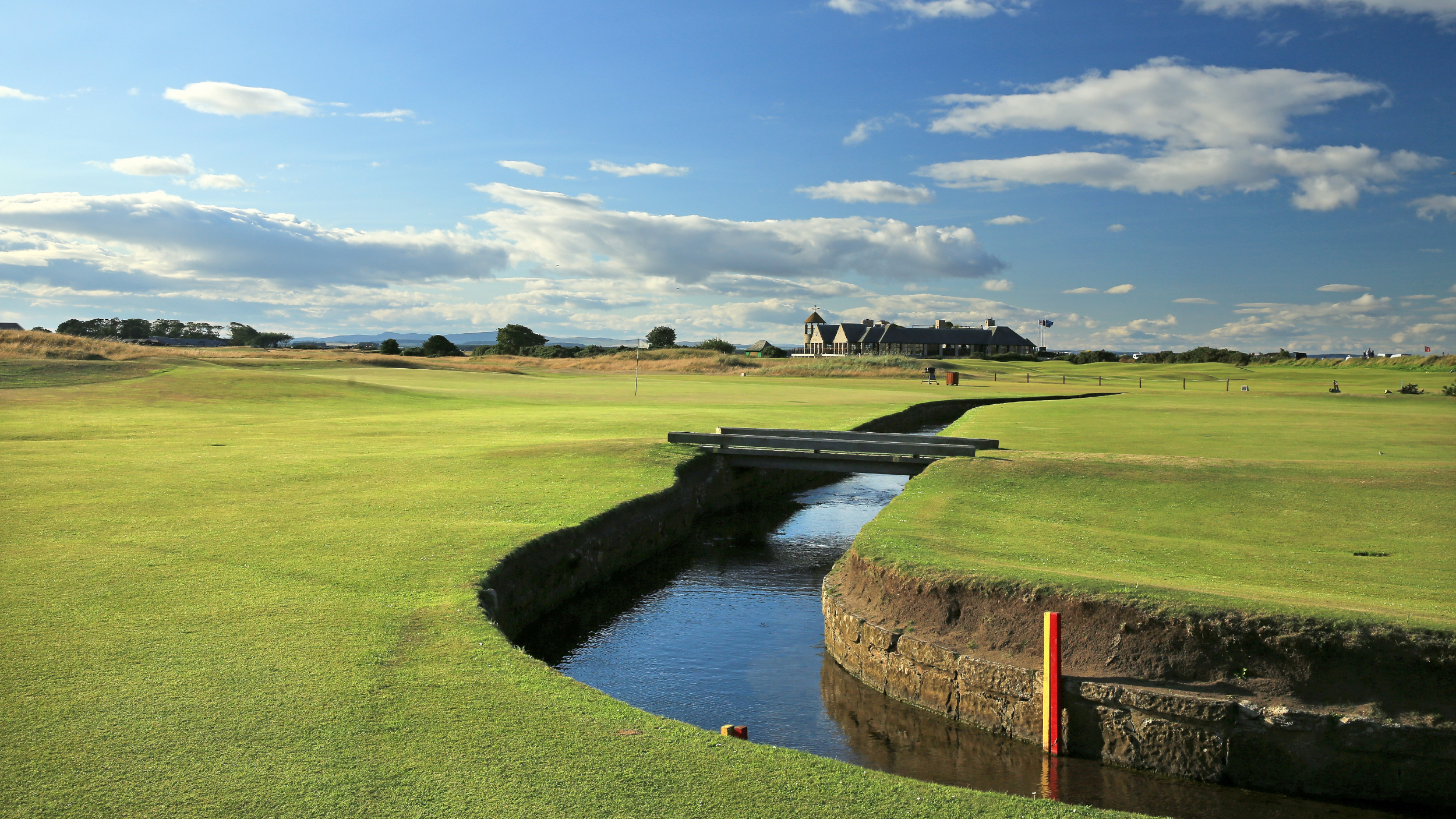
The Old Course’s par 4 first hole is named after the Swilcan Burn that runs in front of the green. Even with a potential watery end for the ball, though, the hole tempts players with an expansive fairway that’s shared with the 18th. Beware, though – those using too gung-ho a tee shot can still easily find the out-of-bounds on either side, while even tee shots can find the burn if carried by the wind. Perhaps safer, then, to lay up for a pitch over the water and the chance of a birdie.
Hole 2 – Dyke
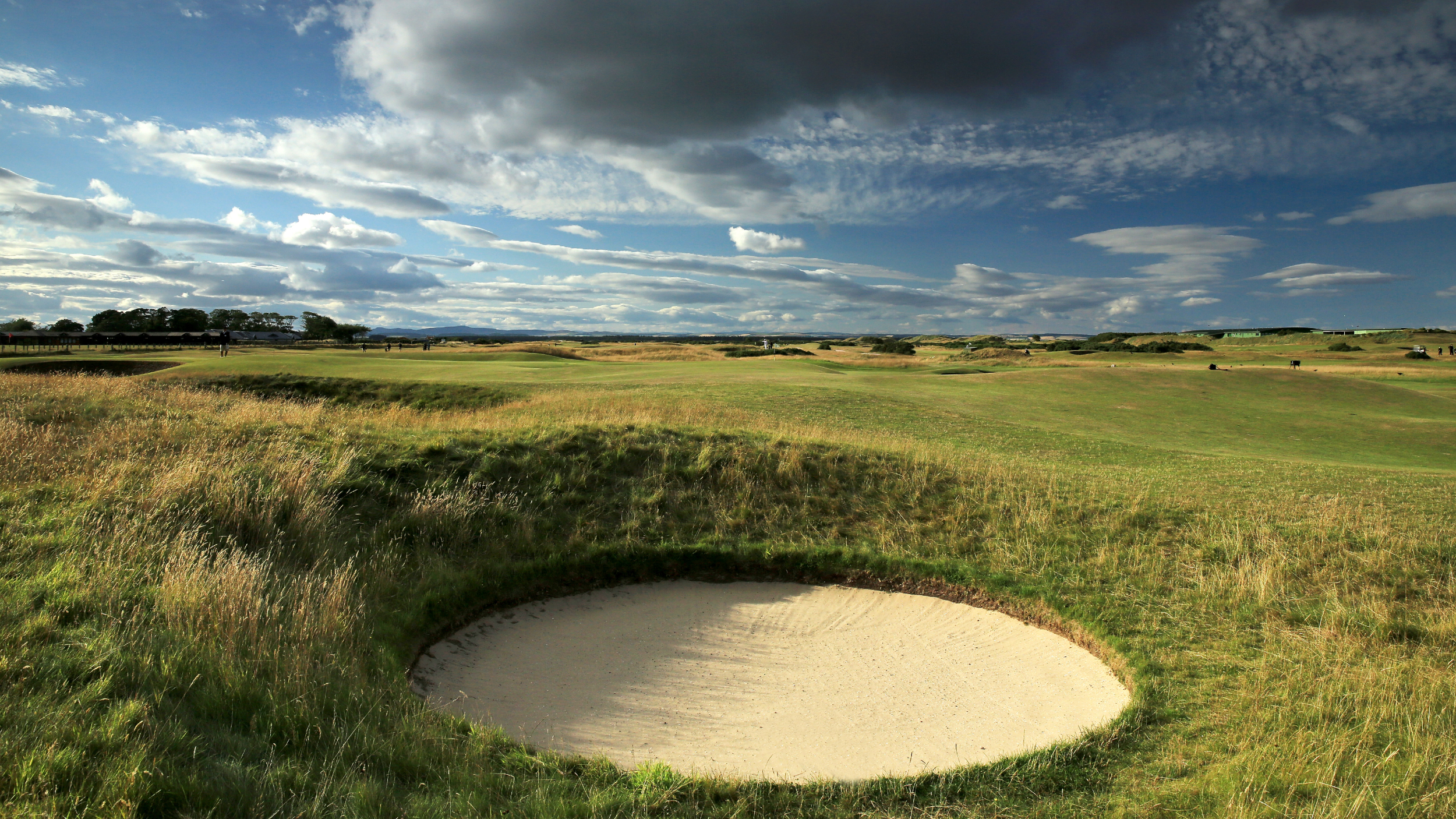
Dyke is a Scottish name for wall, and sure enough, a standing to the left of the fairway is behind the hole's name. The hole is one of seven shared greens, and, in Dyke's case, it shares it with the 16th, Corner of the Dyke. Dyke starts a run of six holes with blind tee shots. Players face a far narrower fairway than on Burn, with Cheape’s bunker (incidentally, all the bunkers have names on The Old Course, too, and this is named after the family who once owned the land) is on the left, while to the right is gorse.
Hole 3 – Cartgate (Out)

This par 4 398-yard hole is so named because there was once a cart road crossing the fairway and leading to the sea (gate is a Scottish word for a road). The hole is home to the notorious – and gargantuan - Cartgate bunker guarding the vast, undulating green shared with the 15th. Usually, aiming left is the safest bet from the tee shot on The Old Course, but not here. The sensible option is to aim right, or you risk an unwanted meeting with the devilish sand trap with your approach.
Hole 4 – Ginger Beer

In Old Tom Morris’ time, this par 4, 480-yard hole marked the first halfway hut for players to take a drink of milk or ginger beer (or possibly something stronger), thanks to the greenkeeper at the time, Old Daw Anderson. The hut was situated behind the green. In its place now? A tricky bunker bearing the same name as the hole.
Hole 5 – Hole O’Cross (Out)

Hole O’Cross is supposedly named because of a tricky chasm that must be crossed on the approach to the green. Hole O’Cross is the first of just two par 5s, at 570 yards. While this offers a birdie or even an eagle opportunity, beware – the Seven Sisters bunkers is to the right, so aiming left from the blind tee shot is the best option. Next, a drive over the Spectacles bunkers is needed before landing on the enormous putting surface for a chance to pick up a shot or two.
Get the Golf Monthly Newsletter
Subscribe to the Golf Monthly newsletter to stay up to date with all the latest tour news, equipment news, reviews, head-to-heads and buyer’s guides from our team of experienced experts.
Hole 6 – Heathery (Out)
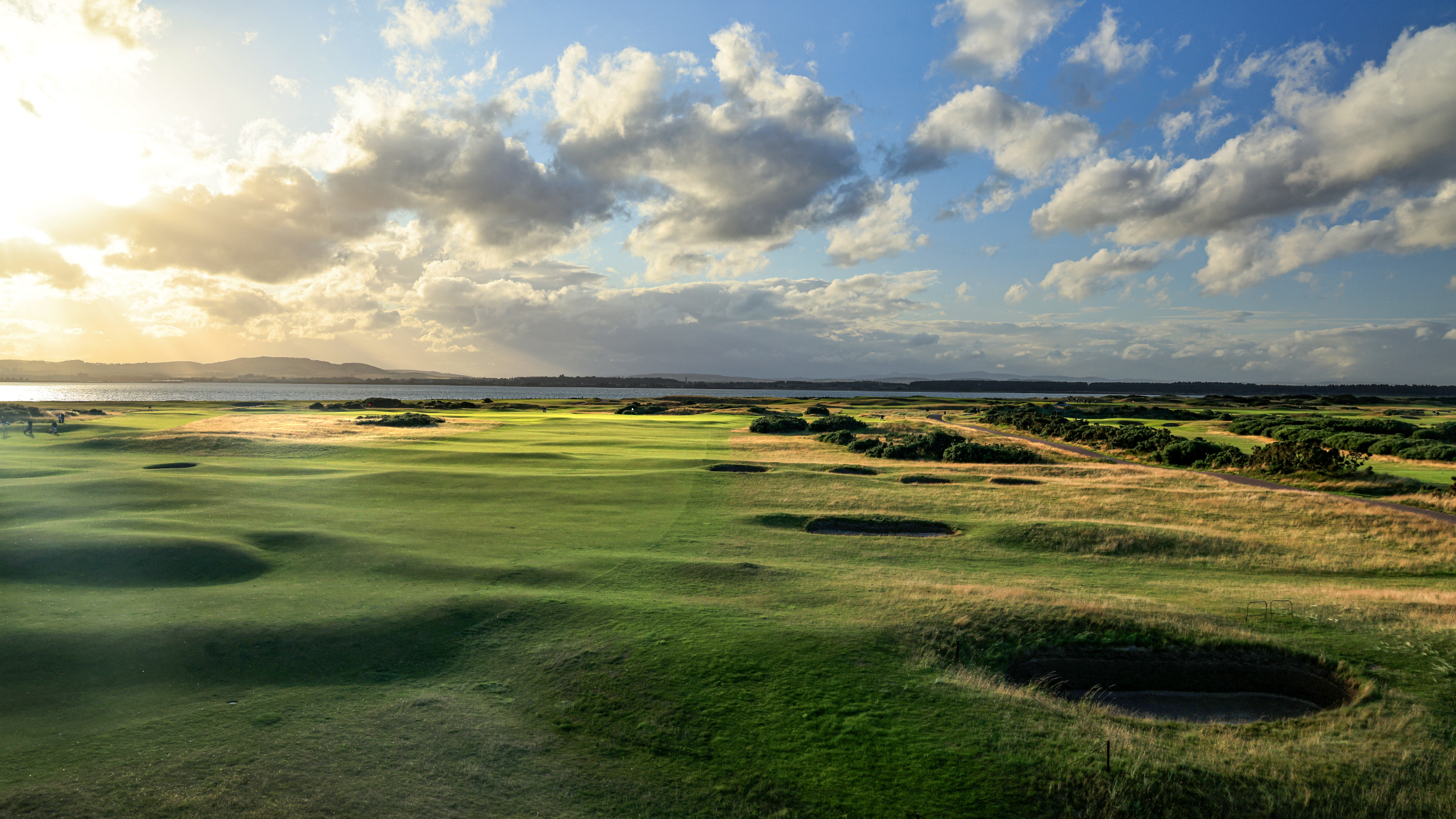
According to volume four of the seventh series of Chambers’ Journal, published in 1913, “The sixth was played down a lane, not of whin, but of heather, hence the Heathery hole.” The par 4, 414-yard hole tee shot is again played blind, but accuracy is a must to avoid the infamous “Coffins” bunkers in the middle of the fairway. After that, an approach leading to yet another shared green can offer a birdie chance.
Hole 7 – High (Out)

The reason for the name of the seventh hole is straightforward – the green, which is shared with the 11th High (In), marks the most elevated point of The Old Course. On a 371-yard par four, an iron may suffice from the tee, otherwise, players risk finding the Shell bunker standing just shy of the green.
Hole 8 - Short

The first of only two par 3s, Short measures just 187 yards, hence the name. Most memorably, Short represents the first instance play turns towards the “Auld Grey Toon” of St Andrews and the beginning of a three-hole sequence bringing play back in, called The Loop. Managing the wind and the green sloping front to back is key.
Hole 9 – End
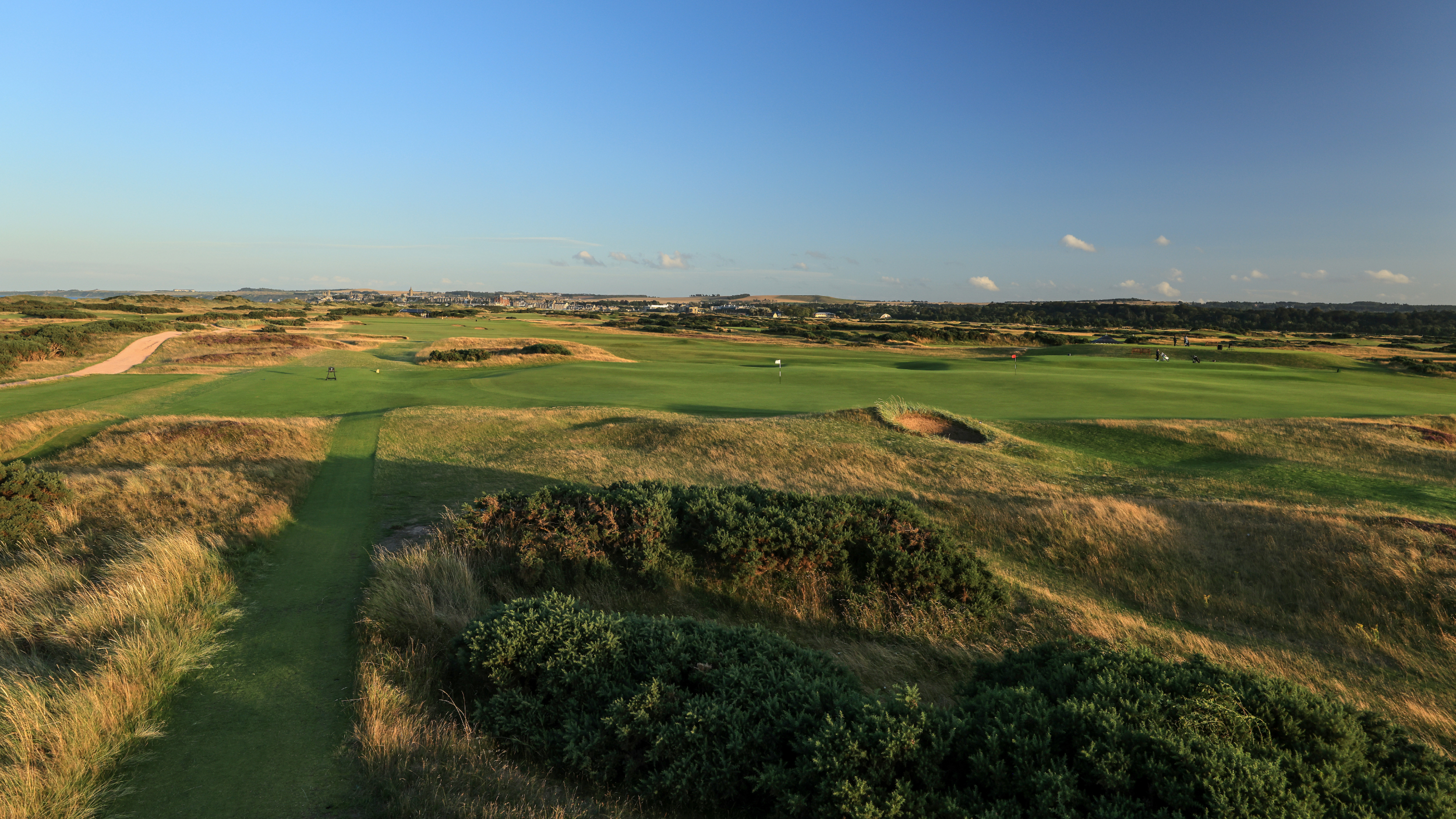
The final hole of the front nine, End offers a birdie opportunity, but taking account of the wind conditions is important. Also, two bunkers, Boase’s and End Hole, are in the centre of the fairway, dampening the temptation to go for the green. Meanwhile, wayward tee shots can find the gorse bushes on the left.
Hole 10 – Bobby Jones
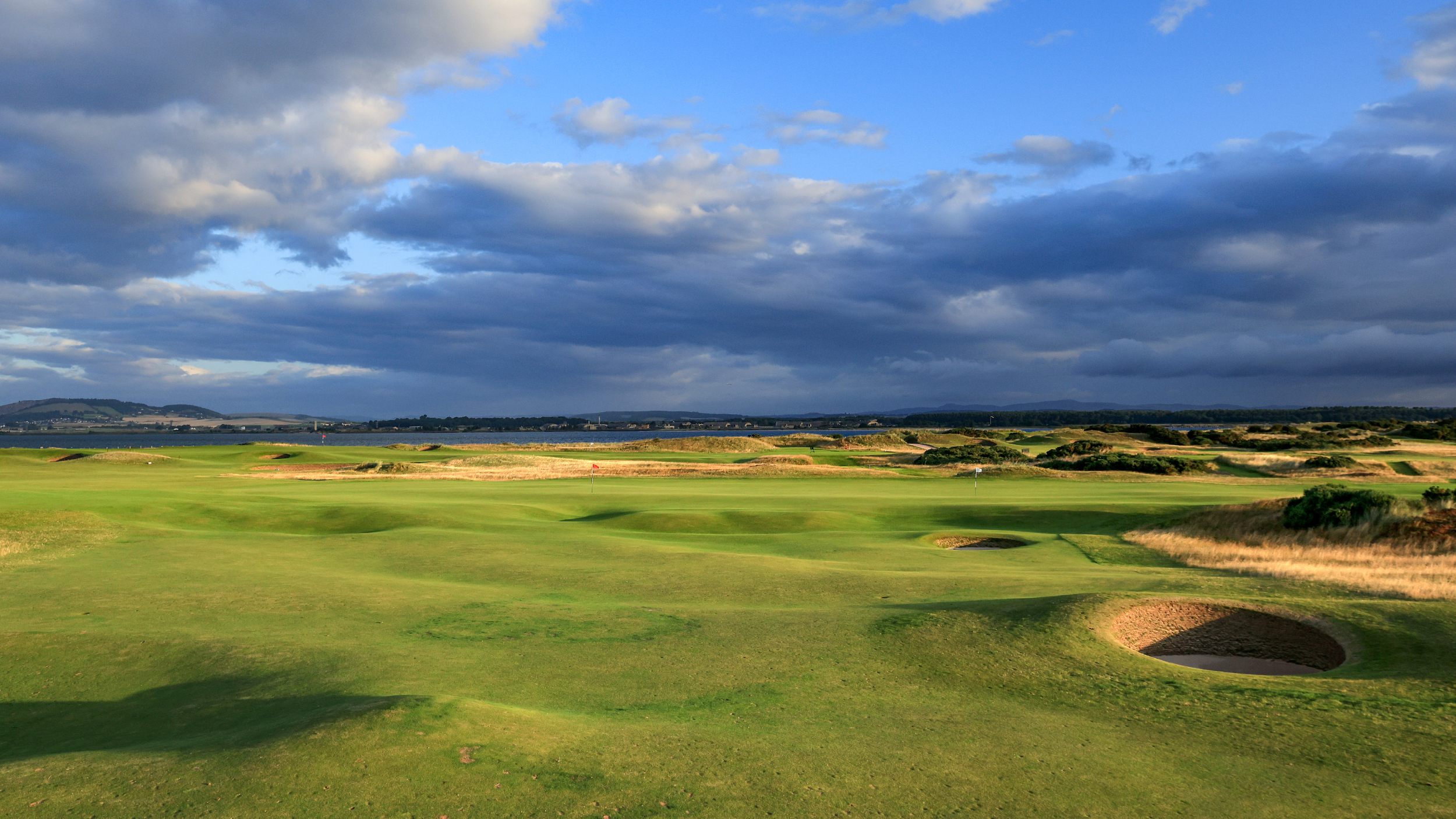
The par 4 286-yard hole is named after American amateur Jones who, in 1927, won The Open at St Andrews and famously declined to take the trophy back to Atlanta with him, instead leaving it at the R&A Club. The hole was also the last he completed in 1921 before tearing up his scorecard and disqualifying himself during the third round. Locals petitioned the council to name a hole in his memory when he died in 1971. An undulating fairway narrows as it runs up to a green shared with the eighth.
Hole 11 – High (In)

At just 174 yards, the par 3 High (In) is the shortest on the course, but it’s one of the toughest. Also known as Eden in the golf architecture world, after the Eden estuary behind the green, its where Jones famously came unstuck in 1921. Locals often call it “the shortest par 5 in golf,” which cleverly hints at its difficulty. Hill and Strath bunkers stand shy of the green, and there’s a steep run-off over the green.
Hole 12 – Heathery (In)
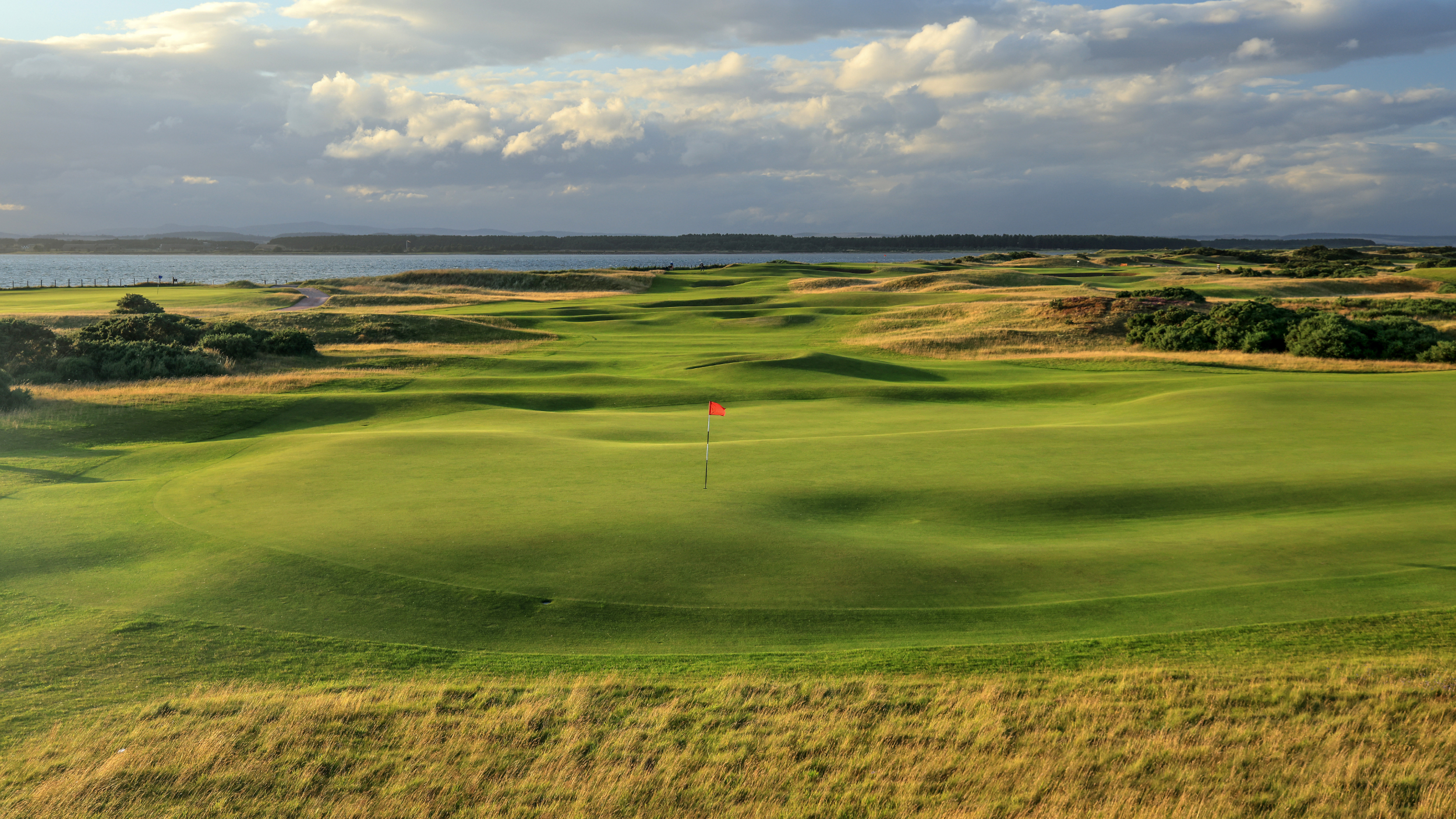
The short par 4 has five bunkers camouflaged by the rolls on the fairway, while there is gorse to its left and right. All those issues can be avoided by driving for the green from the tee, although at 351 yards, it’s only recommended for the biggest and most accurate of hitters. Even then, the plateau on the green is tiny.
Hole 13 – Hole O’Cross (In)
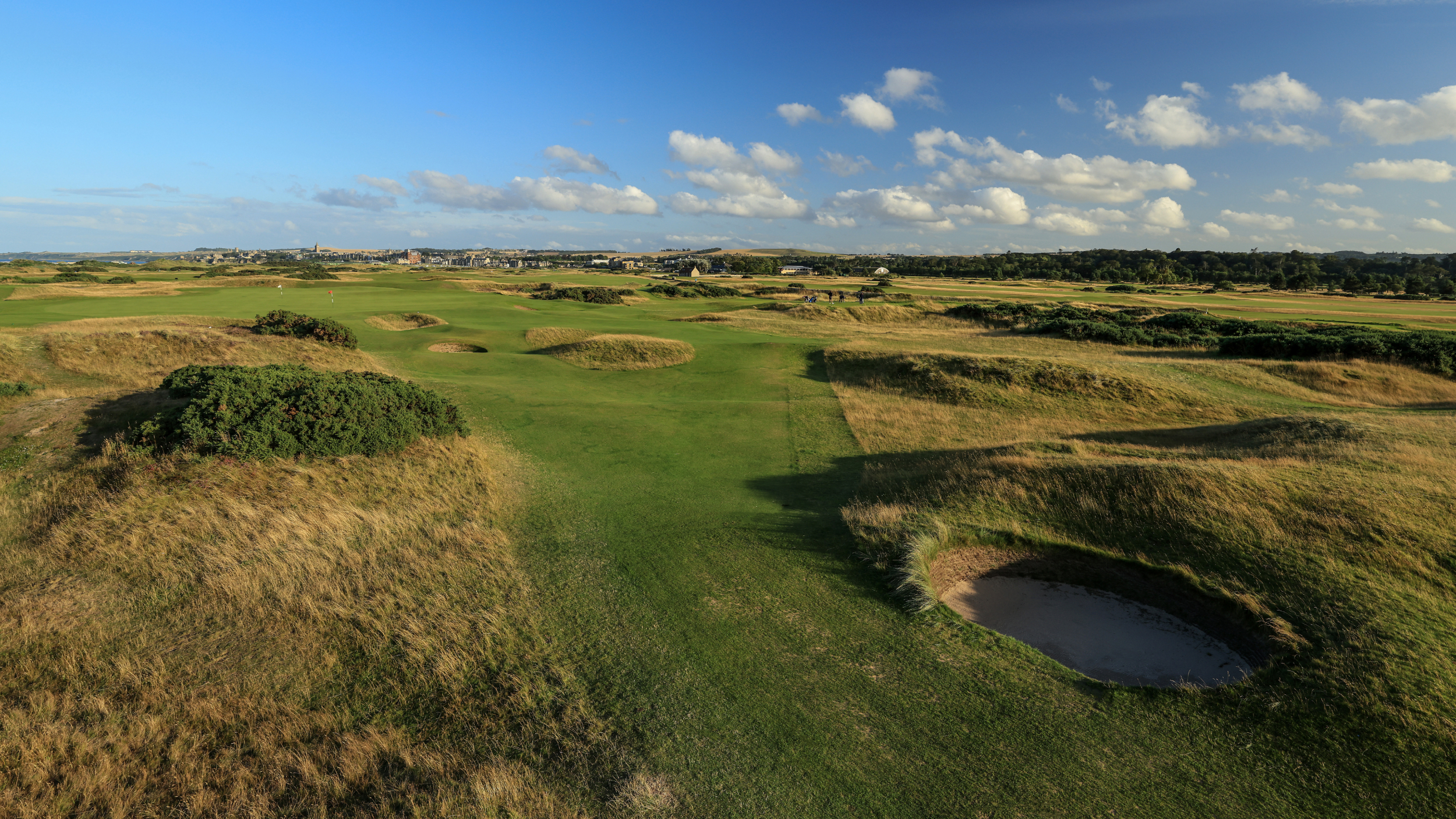
Course designer Tom Simpson once described the hole as the best in the world. The Coffin bunkers on the left pose the greatest threat, while approach shots need to find an elevated green shared with its namesake, the 13th. Drives ideally need to find a gap in the fairway between The Coffins and the right-hand side. However, it’s also vital not to overhit, or you’ll reach the rough-covered mounds to the right and crossing over the hole.
Hole 14 – Long

The second and final par-5 of the course takes its name from its length – 614 yards. A group of bunkers, The Beardies, force players to choose between going left or right. Most professionals will aim for the green in two, but that involves going over Hell bunker to get there. Less confident players will be content to play left onto the 5th fairway.
Hole 15 – Cartgate (In)

This par 4 455-yard hole features a narrowing fairway around 300 yards. If your drive finds it, your approach must avoid the pot bunkers further along. The green is shared with Cartgate (Out) and presents tricky putting.
Hole 16 – Corner Of The Dyke

The name Corner of the Dyke was originally given to Cheape’s bunker on the second hole. On the 16th, it is named for the green tucked near the corner of the wall players first glimpse on the second. It’s a hole that rewards aggression off the tee with an easier approach. Get it wrong, though, and you could go out of bounds. Safer is to aim left, but that will leave an approach over two bunkers. So, aim for the centre? Not so fast – that can leave you at the mercy of the brilliantly named Principal’s Nose bunkers.
Hole 17 – Road

Possibly the most memorable hole on the course is named after the paved road that stands a few yards beyond the green against a stone wall. Your tee shot needs to be hit over the corner of the Old Course Hotel. Navigate that, and the hole harbours the famous Road bunker guarding the green, which has snaffled many a poor approach shot. Then, of course, there’s the road, which you can easily land on (or against the wall of) with a misguided approach shot.
Hole 18 – Tom Morris

Old Tom Morris’ original design, hence the name, the 18th is one of the most famous in golf and is the inspiration for the seventh at Augusta National. Avoid the out-of-bounds on the right, and there’s an enormous fairway awaiting your ball. A walk over the Swilcan Bridge leads to an approach where avoiding the Valley of Sin in front of the green is imperative. Once on the undulating green, three putts are not uncommon.

Mike has over 25 years of experience in journalism, including writing on a range of sports throughout that time, such as golf, football and cricket. Now a freelance staff writer for Golf Monthly, he is dedicated to covering the game's most newsworthy stories.
He has written hundreds of articles on the game, from features offering insights into how members of the public can play some of the world's most revered courses, to breaking news stories affecting everything from the PGA Tour and LIV Golf to developmental Tours and the amateur game.
Mike grew up in East Yorkshire and began his career in journalism in 1997. He then moved to London in 2003 as his career flourished, and nowadays resides in New Brunswick, Canada, where he and his wife raise their young family less than a mile from his local course.
Kevin Cook’s acclaimed 2007 biography, Tommy’s Honour, about golf’s founding father and son, remains one of his all-time favourite sports books.
-
 Reports: Wesley Bryan Suspended By PGA Tour After Playing In LIV Golf Duels
Reports: Wesley Bryan Suspended By PGA Tour After Playing In LIV Golf DuelsThe 2017 RBC Heritage winner is said to have been suspended by the PGA Tour after teeing it up in the recent LIV Golf creator event in Miami
By Elliott Heath
-
 LIV Golf Mexico City: Book Your Tickets To See The Stars Of The Game
LIV Golf Mexico City: Book Your Tickets To See The Stars Of The GameMexico City welcomes LIV Golf's all-star roster later this month, where you can see the world's best players and enjoy the show and the family friendly atmosphere
By Golf Monthly
-
 11 Big Names To Miss The Cut At The 150th Open Championship
11 Big Names To Miss The Cut At The 150th Open ChampionshipWe take a look at some of the biggest names to miss the cut at St. Andrews.
By Sam Tremlett
-
 WATCH: Ian Poulter Holes Longest Ever Televised Putt
WATCH: Ian Poulter Holes Longest Ever Televised PuttThe Englishman holed an absolute monster of a putt today, which is now a record.
By Sam Tremlett
-
 10 Things You Didn't Know About St Andrews
10 Things You Didn't Know About St AndrewsSt Andrews is the home of golf and of the third oldest university in the English-speaking world. The town has a rich and fascinating history.
By Fergus Bisset